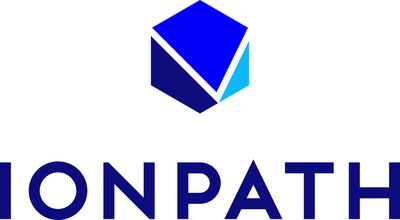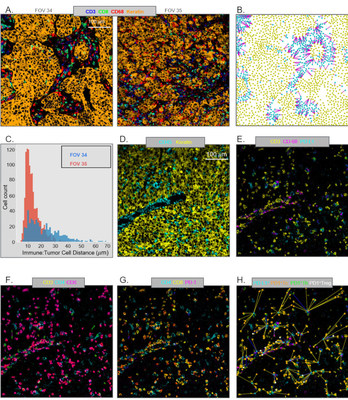 |
MENLO PARK, California, April 1, 2020 /PRNewswire/ -- IONpath, Inc. today announces that they have jointly authored with Bristol Myers Squibb an article entitled Multiplexed Ion Beam Imaging (MIBI) for Characterization of the Tumor Microenvironment Across Tumor Types for the Nature journal Laboratory Investigation.

The ability to understand all the cells present within a tumor by differentiating several cell types at once in a single tissue section has been limited by the technology available. Here the authors showed how Multiplexed Ion Beam Imaging (MIBI™) is able to detail the features of a wide variety of tumor types by providing cell phenotype identification coupled with analysis of their spatial relationships. For this collaboration, Bristol Myers Squibb provided samples from 50 tumor biopsies to IONpath where they were simultaneously stained with a panel of 15 antibodies, each labeled with a specific metal isotope. Highly detailed mapping of the tumor microenvironment provided an immune profile(fig 1) and spatial organization (fig 2) through a multi-step process that segmented the sample down to the individual cell.
This information was gathered as an exercise to observe the characteristics of the samples in question. However, the implications of this new level of tumor mapping at a cellular level could be far reaching. Scientists and drug developers are now able to measure the proximity of immune cells to cancer cells and, within the same sample, measure the protein expression levels of potential drug targets and other variables associated with response to certain therapies such as those targeting immune checkpoints.
"It is IONpath's mission to empower medical discovery, specifically in the area of immuno-oncology, through the characterization of the tumor microenvironment down to the cellular level," said Dr. Jessica Finn, Director of Pathology and one of the authors of the article. Dr. Finn adds, "Examining these detailed and interrelated structures is difficult but important work in the fight to cure certain types of cancer."
As an example of how this mission for IONpath may impact real world decisions, this study demonstrated the possibilities for calculating distances between different cell subsets including tumor and immune cells in addition to PD-1 and PD-L1 expressing immune cell subsets. Further studies in this area may be designed to support better outcomes in the field of immuno-oncology.
Experience how IONpath enables clients and collaborators to examine data via its web enabled visualization platform MIBItracker™. Log into MIBItracker™through this link.
About IONpath, Inc. and IONpath Research Services
IONpath, Inc. is revolutionizing tissue imaging to accelerate medical discovery and improve human health. The company's MIBIscope™ System utilizes Multiplexed Ion Beam Imaging (MIBI™) technology, developed at Stanford University, and represents a transformative step in tissue imaging by simultaneously multiplexing up to 40 markers with specificity down to a single cell. Leading research institutes, biotech and pharmaceutical companies are using the MIBIscope in immuno-oncology, immunology and neuroscience research where high-fidelity multiplexed imaging data is needed. In addition to the MIBIscope™ System enhanced with MIBItracker™, IONpath empowers the research and development initiatives of academic, biotech and pharmaceutical partners through its comprehensive Research Services division.
Visit www.ionpath.com to learn more.
©2020 IONpath, Inc. All rights reserved. IONpath® is a registered trademark and MIBI™ & MIBIscope™ are trademarks of IONpath INC. For Research Use Only. Not for diagnostic use.
IONpath Media Relations |
Phone: 305-803-0824 |
Terri Hnatyszyn |
Email: media@ionpath.com |
Marketing & Communications |

Info - https://mma.prnewswire.com/media/1139769/Figure_5_final_Infographic.jpg
Info - https://mma.prnewswire.com/media/1139770/Figure_6_final_Infographic.jpg
Logo - https://mma.prnewswire.com/media/1088947/IONpath_Logo.jpg